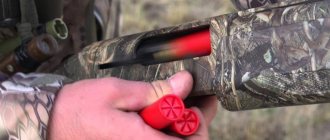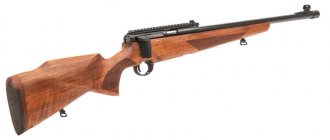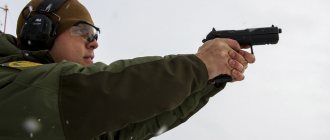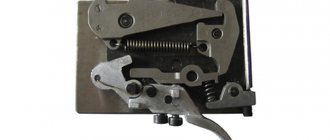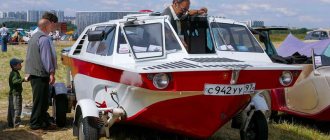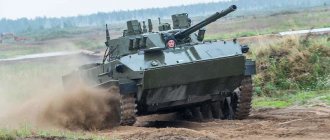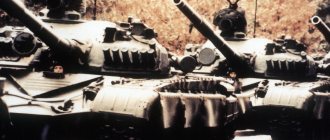Experienced self-propelled gun GAZ-75. “Super Hetzer” USSR. 1944
Home » Real story » Little-known and unrealized projects of tanks and other armored vehicles » Experienced self-propelled gun GAZ-75. “Super Hetzer” USSR. 1944
Little-known and unrealized projects of tanks and other armored vehiclesUnrealized projects of tanks and other armored vehicles of the USSR
Serg 03/25/2019 3173
15
to Favoritesin Favoritesfrom Favorites 1
To combat German heavy tanks of the Tiger and Panther types, in 1943 the NKTP adopted a set of measures to create new self-propelled artillery units with an 85-mm cannon, as well as to install this cannon in the T-34 tank. One of the options was the GAZ-75 self-propelled artillery mount. Work on the GAZ-75 self-propelled artillery mount was carried out at the design bureau of the Gorky Automobile Plant under the leadership of N. A. Astrov.
The design of the GAZ-75 self-propelled guns was a continuation of the concept of light gas self-propelled guns GAZ-74 (SU-76D and SU-57B https://alternathistory.com/opytnye-sau-su-76d-i-su-57b-gaz-74-sssr1943- 44g) using components and assemblies of the T-70M tank.
The main armament was the 85-mm D-5S-85A (T-34-85, SU-85) tank gun. The initial speed of the armor-piercing projectile was 792 m/s. The direct shot range was 1030 meters. Carryable ammunition - 42 rounds. Additionally, there were 2 PPSh submachine guns with 1065 rounds of ammunition, as well as 15 F-1 grenades.
Closed armored body (similar to GAZ-74), welded from rolled steel sheets. The armor provided projectile protection due to the installation of a 90 mm thick frontal plate. The front and middle parts of the hull housed a combined control compartment and fighting compartment. At the rear was the engine and transmission compartment. The driver and commander of the vehicle were located to the right of the gun, on the left side were the gunner and loader. Above the commander's seat there was a special turret in a rotating hatch cover. On the left side there was a hatch with an armored cover for loading ammunition. In the roof and left side of the hull there were embrasures with armored covers for the crew to fire from personal weapons.
A telescopic viewing device was installed in the commander's cupola. The driver's seat was also equipped with similar surveillance devices. In the stowed position, the driver was guided by a device installed in the roof of the wheelhouse, in the combat position - through a device in the hatch cover. The gun was aimed using a TSh-15 telescopic sight and a gun panorama.
The GAZ-75 chassis consisted of 6 road wheels on each side and a crawler track. Instead of support rollers, special skids were used. A stabilizer was installed on the rear road wheels to prevent the vehicle from squatting when firing. The stabilizer was activated using a solenoid simultaneously with pressing the gun's electric trigger button. In addition, special gear rims were installed on the rear rollers along with rubber bands for constant engagement with the tracks. When fired, the rims were braked and the rear rollers were locked, preventing the vehicle from rolling back.
Unlike the SU-76D, the diesel Lend-Lease GMC-71 was pragmatically abandoned, and two sequentially paired GAZ-80 carburetor engines were used as the power plant, each with a power of 85 hp, as on the proven SU-76 design. The transmission components and assemblies were also borrowed from the SU-76.
The GAZ-75, as a self-propelled gun and especially a light self-propelled gun, turned out to be very successful. With a combat weight of no more than 18 tons, this unit had frontal armor 75–90 mm thick (while the serial SU-85 had 45 mm) and was armed with the same powerful 85 mm gun as the T-34-85 and SU-85 . And the serial SU-76, by that time, was generally inferior to it in all respects.
The location of the fighting compartment in the middle of the self-propelled guns improved the distribution of weight on the road wheels and improved cross-country ability on rough terrain. At the same time, the successful gearbox of the self-propelled gun made it extremely mobile both on the highway and on rough terrain. The low silhouette, combined with 90 mm frontal armor and an 85 mm gun, combined to turn the GAZ-75 into an almost ideal self-propelled gun for the Red Army. The manufacturability of production, a proven chassis and a ready-made propulsion system made it very attractive for mass production if adopted.
In the summer of 1943, development was completed, and in the winter of 1944, a prototype was manufactured and sent for testing, which successfully passed both factory and state tests. tests. But….
….GAZ-75, unfortunately, was never put into service. The actual reasons are unclear. Different post-war sources give completely different reasons, from completely logical to completely far-fetched:
“...despite the fact that the GAZ-75 successfully passed tests, it was not accepted for service. The command then considered that, given the overwhelming advantage in quantity and the availability of such vehicles as the SU-85 and SU-76 in mass production, there was no point in adopting another self-propelled gun.”
“ But the self-propelled guns did not go into production for various reasons. The main one was the reluctance to break an established technological process due to minor changes (as in the case of engines), or even completely rebuild it when switching to the production of a new machine.”
“The self-propelled gun GAZ-75 turned out to be heavy (!?), poorly maneuverable (!?). The installation was not recommended for adoption.”
“Based on the test results, work on the GAZ-75 was stopped. The main reason for abandoning the GAZ-75 design was the sudden and unacceptable movements of the vehicle when firing in an area from 10 to 15° in azimuth.”
It seems to me that the real reason was that the GAZ-75 simply did not have enough 85-mm D-5 or S-53 cannons. Because all of them were used to equip the produced SU-85 (in series from August 1943) and the priority production T-34-85 (in series from January 1944)
Although this vehicle was clearly the best among the light self-propelled guns of the USSR and was superior to the notorious “Hetzer” (which is considered the best light self-propelled gun of WW2), it still did not enter service with the GAZ-75, like other domestic light self-propelled guns similar to the Hetzer. In the absence of competition, it is not surprising that the Hetzer took the top spot in the ranking of light self-propelled guns of the Second World War. True, it is necessary to clarify here that it was the best in its class of fully armored light tank destroyers, among serial self-propelled guns. And among the experienced ones, I would leave the palm to the Soviet GAZ-75.
| self-propelled guns | SU-76M | SU-76D | Hetzer | GAZ-75 | SU-85 |
| TTX | |||||
| Combat weight, t | 10,5 | 11,6 | 16,1 | 15 | 29,2 |
| Length, mm | 4 968 | 5 850 | 6 380 | 7 225 | 8 150 |
| Width, mm | 2714 | 2430 | 2630 | 2775 | 3000 |
| Height, mm | 2100 | 1910 | 2170 | 1900 | 2450 |
| Wed. beat pressure on the ground, kg/cm2 | 0,55 | 0,68 | 0,67 | 0,68 | |
| Ground clearance, mm | 300 | 340 | 300 | 400 | |
| engine's type | 2x GAZ-70 | GMC-71 | Praga AC/2 | GAZ-80 | AT 2 |
| Maximum power, hp | 2x70 | 110 | 160 | 2x85 | 500 |
| Fuel capacity, l | 412 | 270 | 320 | 465 | |
| Specific power, hp/t | 12,5 | 9,5 | 11,3 | ||
| Maximum speed, km/h | 41 | 36 | 42 | 45 | 55 |
| Cruising range, km | 190 | 200 | 177 | 200 | 350 |
| Reservation, mm | |||||
| – front/side/stern of the hull | 25-35/15/15 | 60/15/15 | 60/20/10 | 50/15/15 | 45/45/45 |
| – front of the cabin | 35 | 60 | 60 | 90 | 45 |
| – roof / bottom | /6 | 10/6 | 10/8 | 20/20 | |
| Crew, people | 4 | 4 | 4 | 4 | 4 |
| Radio station | 12-PT | 12-RT | FuG5 | 12-RT | 9RM |
| Intercom | TPU-3 | TPU-ZF | FuG Spr f | TPU-ZF | TPU-3 |
| Artillery weapons: | 76.2 mm ZIS-3c | 76.2 mm C-1 | 75 mm Pak 39/L 48 | 85 mm D-5S | 85 mm D-5S |
| Initial projectile speed, m/s: | |||||
| – high-explosive fragmentation | 680 | 662 | |||
| – armor-piercing | 680 | 792 | 792 | ||
| - sub-caliber | 965 | 965 | 1050 | 1050 | |
| Max, firing range, m | 8 600 | 12 100 | 13 600 | 13 600 | |
| Direct shot range, m | 1000 | 950 | 1030 | 1030 | |
| Rate of fire, rds/min: | 15 | ||||
| – maximum | 20 | 8 | 8 | ||
| – combat | 15 | 5 | 5 | ||
| Ammunition, shots | 60 | 71 | 41 | 42 | 48 |
Sergey Sych
Reconstruction Sergei Sych.
History of creation and production
As of the early 1980s, the main armored personnel carrier of the Soviet Union was the BTR-70. But they could not get rid of the main flaws of the BTR-60, despite the improvements made. One of the main shortcomings was the still unsatisfactory landing/disembarkation of the crew and troops. Also, the design of the power plant, made of twin carburetor engines, was unreliable and complex, and at the same time consumed a lot of fuel. There were other disadvantages compared to diesel. Also, the armored personnel carrier was poorly protected, and the water-jet propulsion was easily clogged with peat slurry, algae and other objects.
The elimination of these shortcomings was entrusted to the GAZ Design Bureau, where in the early 80s. The design of the GAZ-5903 armored personnel carrier was completed. The layout of the BTR-70 has been preserved, but significant improvements have been made. For embarkation/disembarkation, double-leaf hatches were installed, located on the sides of the hull; carburetor engines were replaced by one, but very powerful diesel engine. The dimensions increased as follows - the height and length of the hull increased by 11.5 cm, and the width - by 10 cm, while the overall height of the armored personnel carrier increased by 3 cm. In further modifications, it became possible to shoot from under the armor, thanks to ball mounts deployed towards anterior hemisphere. The armor has increased slightly, but the total weight has increased by 2100 kg. However, the power reserve has increased, but mobility has not decreased. After the GAZ-5903 passed state tests, it was put into service in 1986 and received the designation BTR-80.
Vehicles based on the BTR-80
7.1 Soviet and Russian
- 1V152 - unified command and observation post KSAUO 1V126 "Kapustnik-B"
- 2S23 "Nona-SVK" - self-propelled guns of 120 mm caliber
- BRVM-K - repair and restoration vehicle
- BRDM-3 - reconnaissance and patrol vehicle
- BREM-K - repair and recovery vehicle
- BREM-2000K - repair and recovery vehicle, made in Ukraine
- GAZ-59037 - civilian SUV
- BPDM "Typhoon" - anti-sabotage combat vehicle
- BPDM "Typhoon-M" (2007-2012) - anti-sabotage combat vehicle, created on the basis of the BTR-82
- GAZ-59402 "Purga" - a fire engine on a combined pneumatic wheel and railway track
- UNSh (K1Sh1) is a unified chassis designed for the production of wheeled special vehicles necessary for the installation of reconnaissance equipment, communications equipment, medical aid and other special-purpose equipment. Supplemented with a number of hatches and a higher height of the middle part of the hull. It is produced in two varieties: UNSh-10 - with a cap and UNSh-12 - without it.
- BMM-80 - a vehicle for transporting the wounded
- 9S482M6 - mobile control point for air defense units
- R-149BMR "Kushetka-B" - KShM
- RKhM-4 - a vehicle for radiation and chemical reconnaissance
- RKhM-6 - a vehicle for radiation and chemical reconnaissance
- RPM-2 - vehicle for reconnaissance and search activities
- ZS-88 - sound broadcasting station
7.2 Foreign
- ASRAD - IGLA (ASGLA) - short-range air defense system, developed by the EU jointly with Ukraine. A variant of the German-made ASRAD air defense system, created on the basis of the BTR-80 vehicles belonging to the army of the German Democratic Republic.
